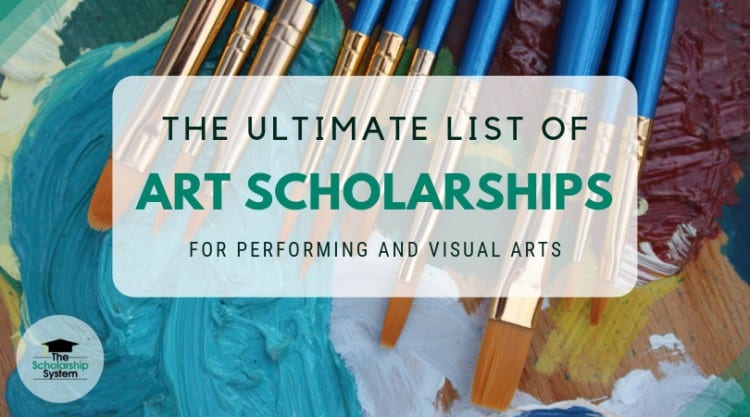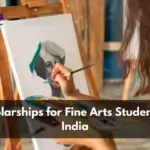I remember staring at the blank canvas of my future, a knot tightening in my stomach. Art, for me, wasn’t just a hobby; it was the air I breathed, the language my soul spoke. But the practical side of things, the dreaded "money" talk, always seemed to paint over my dreams with a thick layer of grey. How could I possibly pursue a degree in visual arts, or even music, when the tuition fees alone felt like a mountain impossible to climb? My family, bless their hearts, supported my passion, but their pockets weren’t as deep as my aspirations. It felt like I was standing at the edge of a beautiful forest, longing to enter, but a huge, invisible fence blocked my way.
For a long time, I just assumed art school was for the privileged few, for those whose families could write a check without batting an eye. I figured I’d end up doing something "sensible," something that paid the bills, and art would remain a cherished, private escape. The thought made my heart ache. But then, a flicker of hope, like a tiny spark in the dark, appeared. It started with a casual conversation with an old art teacher, a wise woman with kind eyes and paint stains on her apron. "Have you looked into scholarships?" she asked, almost as an afterthought. Scholarships? For art? The idea felt foreign, almost too good to be true. My mind had always linked scholarships with science whizzes or star athletes, never with the messy, passionate world of paint and melody.
That conversation was my turning point. It opened up a whole new vista, a path I hadn’t even considered. It was like discovering a hidden trail in that forest I longed to enter. The journey wasn’t easy, not by a long shot, but it was incredibly rewarding. And if I can do it, if I can navigate the maze of applications and requirements, then you can too. My goal here is to share what I learned, the bumps and triumphs along the way, to help you find your own path to funding your creative education.
When I first dipped my toes into the world of arts scholarships, it felt like deciphering an ancient scroll. There were so many terms, so many places to look. But once I broke it down, it became much clearer. Essentially, arts scholarships come in a few big categories. First, you have need-based scholarships, which are given to students who show a financial need to attend school. It’s all about proving you need help covering the costs. Then there are merit-based scholarships, which are awarded because you’re really good at what you do. This is where your talent shines – your portfolio, your audition, your writing samples. Sometimes, a scholarship might be a mix of both, looking at your talent and your financial situation.
Beyond those two main types, scholarships often get very specific about the art form. Are you a painter? A sculptor? A musician? A dancer? A writer? A filmmaker? There are scholarships for almost every creative pursuit imaginable. For instance, if you’re a visual artist, you might find scholarships specifically for painting, drawing, sculpture, photography, graphic design, or even digital art. These often require a strong portfolio that demonstrates your skills and unique artistic voice. Musicians have scholarships for specific instruments, vocal performance, composition, or music education. Dancers might find opportunities for ballet, contemporary, jazz, or choreography. Writers can look for awards based on poetry, fiction, playwriting, or journalism. Filmmakers might find support for cinematography, directing, screenwriting, or animation. The key is to be as specific as possible in your search. Don’t just search "art scholarship"; try "photography scholarship" or "jazz saxophone scholarship."
Another important distinction I learned was between university-specific scholarships and external scholarships. University-specific ones are offered directly by the colleges and universities you apply to. When you apply for admission, many schools automatically consider you for their internal scholarships, especially if you indicate an arts major. But it’s always wise to check their financial aid pages for additional, separate applications. External scholarships, on the other hand, come from outside organizations – foundations, corporations, non-profits, art councils, or even individual donors. These are often where the real treasure hunt begins, as they can be less competitive than the big university ones, or offer a wider range of criteria. And don’t forget local scholarships! Your town’s Rotary Club, local arts guild, or even a generous individual in your community might offer scholarships specifically for local students pursuing the arts. These often have fewer applicants and higher chances of success.
My own journey started with endless hours of research. I spent evenings hunched over my laptop, searching every keyword I could think of. "Art school funding," "creative grants," "performing arts financial aid," "scholarships for young artists." I scoured university websites, looking beyond just the tuition numbers to the "financial aid" or "scholarships" section. I signed up for scholarship databases online, which were a bit overwhelming at first but eventually became very helpful filters. I also made sure to check with my high school guidance counselor, who had a list of local opportunities I wouldn’t have found anywhere else. This was crucial. The more places you look, the more chances you create for yourself.
Once I found a scholarship that seemed like a good fit, the real work began: understanding the requirements. This part might sound obvious, but it’s where many people stumble. Every scholarship has its own set of rules, its own specific requests. Some asked for a portfolio of 10-15 pieces, others for a single essay, some for an audition video, and some for a combination of everything. I learned very quickly that reading the instructions carefully was non-negotiable. Don’t skim! If they ask for three letters of recommendation, don’t send two. If they want a 500-word essay, don’t send 1000. Following directions shows attention to detail and respect for the committee’s time.
The application process felt like creating a giant, multi-faceted artwork itself. For visual artists like me, the portfolio was paramount. This wasn’t just a collection of my favorite drawings; it was a curated story of my artistic journey. I learned that quality trumps quantity. It’s better to submit five truly strong pieces than fifteen mediocre ones. I focused on showing a range of my abilities – different mediums, different subjects, different styles – but all connected by my unique voice. I made sure to photograph my work well, with good lighting and clear images. For performing artists, the audition is your portfolio. Practice, practice, practice. Record yourself, get feedback from teachers, perform for friends and family. Make sure your audition piece showcases your best abilities and fits the scholarship’s criteria.
Then there was the essay or personal statement. This, I believe, is where you truly come alive on paper. This isn’t just about listing your accomplishments; it’s about telling your story. Why do you love art? What does it mean to you? How has it shaped you? What are your dreams for the future, and how will this scholarship help you achieve them? I poured my heart into these essays. I wrote about the first time I felt truly connected to a paintbrush, the solace I found in creating, the challenges I overcame, and my vision for using art to connect with others. I tried to make each essay specific to the scholarship, weaving in their values or mission if possible. Authenticity is key here. Don’t try to be someone you’re not; let your passion shine through.
Letters of recommendation were another piece of the puzzle. I chose teachers who knew my work well, who had seen my dedication and growth. I didn’t just ask them to write a letter; I asked if they felt they could write a strong letter. I provided them with all the information they needed: the scholarship details, the deadline, my resume, my personal statement, and even a few bullet points about what I hoped they would highlight. This made their job easier and ensured the letters were relevant and powerful. Always ask well in advance, giving them plenty of time, usually a few weeks at minimum.
Some scholarships required an interview. This was nerve-wracking but also an opportunity to make a personal connection. I prepared by researching the organization and thinking about common interview questions. Why this scholarship? What are your strengths? What are your weaknesses? What are your long-term goals? I dressed neatly, arrived on time, made eye contact, and most importantly, let my enthusiasm show. I also made sure to have a few thoughtful questions prepared to ask them at the end – it shows you’re engaged and genuinely interested.
Throughout this entire process, meeting deadlines was absolutely paramount. A late application is almost always an automatically rejected application. I created a spreadsheet with all the scholarship names, deadlines, requirements, and submission links. I set reminders on my phone and checked them religiously. Organization became my best friend.
Looking back, there were certainly moments of frustration and despair. I faced rejections, as most applicants do. Each "no" felt like a small jab to my confidence. But I learned to see them not as personal failures, but as redirection. It meant that particular scholarship wasn’t the right fit, or perhaps there was an even better opportunity waiting for me. The biggest pitfall I encountered, and often saw others fall into, was giving up too soon. The search can be tiring, the applications demanding. It’s easy to get discouraged. But perseverance is crucial. Think of it like a long-distance run; you just keep putting one foot in front of the other.
Another common mistake I observed was submitting generic applications. Copy-pasting the same essay for every scholarship is a recipe for failure. Each scholarship committee wants to feel like you’ve specifically chosen them and put thought into your application for their award. Take the time to tailor each one. And please, for the love of all things creative, proofread everything! A typo in your personal statement can really detract from your professionalism. Get a friend or teacher to read it over. A fresh pair of eyes can catch things you’ve missed a hundred times.
Finally, after months of searching, writing, creating, and waiting, the first acceptance letter arrived. I remember the exact moment. It wasn’t the biggest scholarship, but it was a sign, a tangible proof that my efforts were paying off. Then came another, and another. The feeling of seeing those scholarship offers accumulate was indescribable. It was like watching the grey layer slowly peel away from my future, revealing the vibrant colors I had always dreamed of. The relief, the joy, the validation – it was overwhelming. I wasn’t just getting money; I was getting an affirmation that my art mattered, that my dreams were worth investing in.
Receiving those scholarships changed everything for me. It wasn’t just about covering tuition; it was about the freedom to create without the crushing weight of financial worry. It meant I could truly immerse myself in my studies, experiment with new techniques, and dedicate myself fully to my artistic growth. It also connected me to a community of like-minded individuals, both fellow scholarship recipients and the generous people who funded these awards. I realized that these scholarships weren’t just handouts; they were investments in future artists, storytellers, and innovators. There was a responsibility that came with it – a responsibility to work hard, to make the most of the opportunity, and eventually, to pay it forward.
So, to any aspiring artist reading this, to anyone who feels that familiar knot of financial worry, please hear this: Your creative dream is valid, and there are people and organizations out there who believe in it enough to help fund it. Don’t let money be the fence that keeps you from your forest.
Start early. The earlier you begin your search and application process, the less rushed you’ll feel and the more opportunities you’ll uncover. Believe in yourself and the unique value of your art. Your perspective is important, and your voice deserves to be heard. Don’t be afraid to ask for help – from teachers, mentors, guidance counselors, or even experienced artists in your community. They might know about resources you haven’t found yet. Network! Go to local art shows, connect with artists, join creative communities. You never know where a helpful lead might come from. And most importantly, keep creating, regardless. Your passion, your dedication, and the work you produce are your most powerful assets. Keep honing your craft, keep telling your stories, keep making your mark on the world.
My journey wasn’t a straight line; it was full of twists and turns, moments of doubt and bursts of inspiration. But it led me to where I am today, a place where I can pursue my artistic passion with purpose and without overwhelming financial burden. The unseen brushstrokes of scholarship support painted a future brighter than I ever imagined. And I truly believe they can do the same for you. Go find your canvas, gather your tools, and start painting that future. The resources are out there, waiting for you to discover them.



